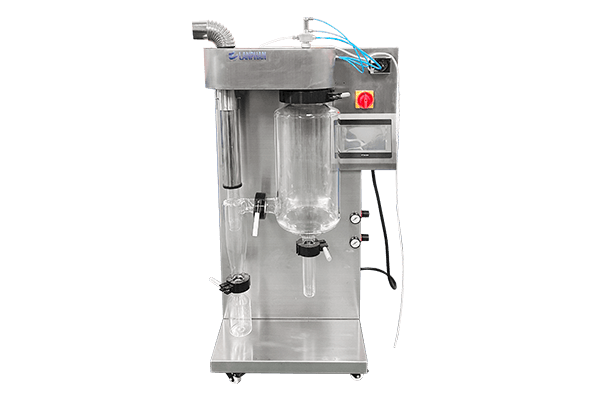Single Punch Tablet Press: The Unsung Hero of Tablet Manufacturing
If you’ve ever wondered how tablets are made, the answer might surprise you. It’s not all high-tech machinery and complex processes. Sometimes, it comes down to a simple, yet powerful device: the Single Punch Tablet Press. This tool plays a crucial role in the production of tablets, whether for pharmaceuticals, supplements, or even candies.
What is a Single Punch Tablet Press?
At its core, a Single Punch Tablet Press is a machine that compresses powder into tablets. It uses just one punch, hence the name “single punch.” This machine is ideal for small-scale production or research and development purposes. It’s straightforward, efficient, and cost-effective, making it a favorite for many small businesses and labs.
Why is it Important?
You might be wondering why such a simple device is so essential. The Single Punch Tablet Press is vital because it offers precision and control. It allows manufacturers to produce tablets with specific shapes, sizes, and weights. This is crucial, especially in the pharmaceutical industry, where even a slight variation in tablet weight can affect dosage and effectiveness.
How Does It Work?
Understanding how the Single Punch Tablet Press works is fascinating. The process starts with a powdered mixture, which is placed into a die cavity. The machine then uses a single punch to compress the powder into a tablet. The pressure applied can be adjusted to achieve the desired hardness and density. After compression, the tablet is ejected from the die cavity, ready for packaging or further processing.
The Benefits of Using a Single Punch Tablet Press
One of the main advantages of the Single Punch Tablet Press is its simplicity. It’s easy to operate, requires minimal maintenance, and is highly reliable. It’s also versatile, capable of producing tablets in various shapes and sizes. Moreover, it offers excellent precision, which is crucial for ensuring consistent tablet quality.
Another benefit is its cost-effectiveness. Unlike more complex tablet presses, the Single Punch Tablet Press is relatively inexpensive. This makes it an ideal choice for small businesses or labs with limited budgets. Additionally, its compact size means it requires less space, making it a great option for smaller facilities.
Applications of Single Punch Tablet Press
The Single Punch Tablet Press is used in various industries. In the pharmaceutical industry, it’s commonly used for producing small batches of tablets, such as for clinical trials or customized medications. It’s also popular in the supplement industry, where it’s used to produce vitamins, minerals, and herbal tablets. Additionally, the Single Punch Tablet Press is often used in the food industry for making tablets of candies or breath mints.
Factors to Consider When Choosing a Single Punch Tablet Press
When selecting a Single Punch Tablet Press, several factors should be considered. These include the machine’s capacity, the type of tablets you want to produce, and the level of precision required. It’s also important to consider the machine’s build quality and durability, as these will affect its longevity and reliability.
Another crucial factor is the ease of use. A user-friendly machine will save time and reduce the risk of errors. It’s also worth considering the availability of spare parts and technical support, as these can be vital for maintaining the machine’s performance over time.
Maintenance Tips for Single Punch Tablet Press
To ensure your Single Punch Tablet Press operates smoothly, regular maintenance is essential. This includes cleaning the machine after each use to prevent powder buildup, which can affect tablet quality. It’s also important to check the machine’s parts regularly for wear and tear and replace them as needed.
Lubrication is another crucial aspect of maintenance. Proper lubrication ensures the machine’s moving parts operate smoothly and reduces the risk of breakdowns. It’s also a good idea to keep a log of maintenance activities, as this can help identify patterns and prevent potential issues.
Common Problems and Solutions
Even with regular maintenance, problems can arise with the Single Punch Tablet Press. One common issue is tablet sticking, where the powder sticks to the punch or die, affecting tablet quality. This can often be resolved by adjusting the machine’s settings or using a different formulation.
Another common problem is tablet capping, where the tablet’s top separates from the rest of the tablet. This can be caused by insufficient compression or poor powder formulation. Adjusting the compression pressure or modifying the formulation can often resolve this issue.
The Future of Single Punch Tablet Press
As technology advances, the Single Punch Tablet Press is also evolving. Newer models are incorporating features such as digital controls and automation, making them even more efficient and user-friendly. These advancements are expected to make the Single Punch Tablet Press even more popular in the years to come.
Conclusion
The Single Punch Tablet Press may be a simple machine, but it’s an essential tool in the tablet manufacturing process. Its simplicity, cost-effectiveness, and precision make it a valuable asset for small businesses and labs. Whether you’re in the pharmaceutical, supplement, or food industry, the Single Punch Tablet Press offers a reliable and efficient solution for tablet production.
If you’re interested in learning more about tablet manufacturing and the tools involved, stay tuned. We’ll dive deeper into other types of tablet presses and their unique features in our next article.

